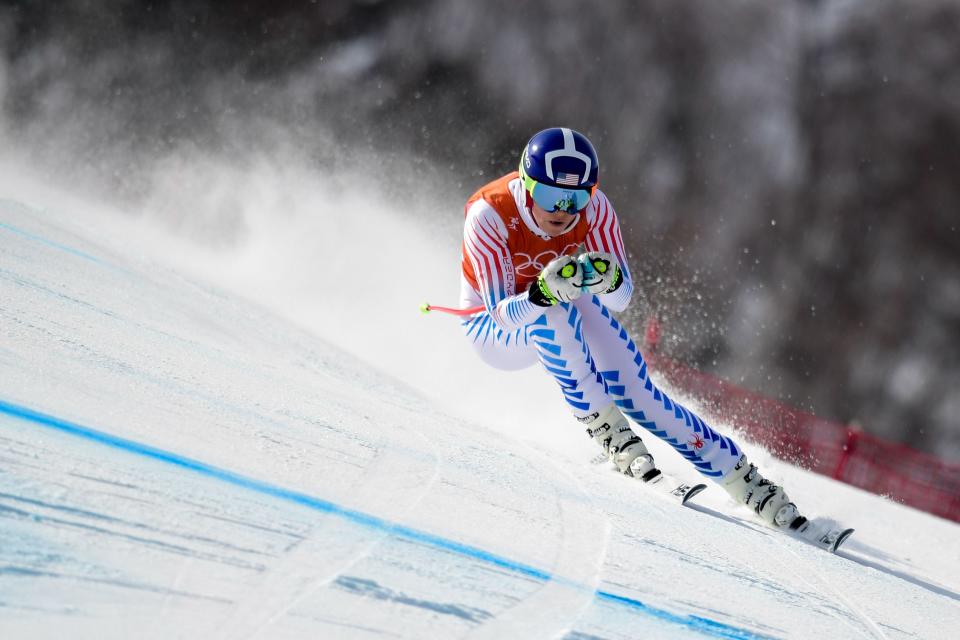What's the fastest Winter Olympic sport? There are three possible answers
What is the fastest Winter Olympic sport?
It’s a great, and timely, question – especially because there’s no one agreed-upon answer, and especially because two of the three sports in contention for the title will be in action on the same day this week.
There are actually four contenders: Luge, bobsled, skeleton and alpine skiing. Which of the four is fastest? That depends on how you define fastest.
We’re defining it as the top speed of a human being at any point during competition. So no, a hockey puck stung by a slap shot doesn’t count. But the crazy men and women hurtling along an ice track on three different kinds of sleds, and the crazy men and women whizzing down mountain slopes on skis do count.
Skeleton is out of the mix, because it’s the slowest of the three sliding sports. But let’s look at the cases for the other two and skiing:
ALPINE SKIING

The fastest alpine event is the downhill – the one in which Lindsey Vonn will go for gold on Wednesday. And its top recorded speed is not in doubt. The mark was set by Johan Clarey at the 2013 World Cup in Wengen, Switzerland. The Frenchman, at one point during his downhill run, reached 100.6 miles per hour. (Other skiers have gone faster, but not in events that feature at the Olympics.)
If you snoop around the internet, and try various search-engine queries, most official sources for luge, bobsled and skeleton don’t mention speeds above 100 miles per hour. But that doesn’t necessarily mean nobody’s ever broken triple digits.
BOBSLED
In fact, there are claims that the world-record bobsled speed is around 125 miles per hour. But it’s unclear when or where that record was set. Remember, there’s a difference between any old world-record speed on a bobsled and an in-competition record, which is what we’re looking for.
The International Bobsled and Skeleton Federation cites “up to 150 kilometers per hour” as its speed number, which equates to around 93 miles per hour. But at the 2010 Winter Olympics, one bobsled team clocked in above 95 miles per hour.
Among the sliding sports, bobsled is the only one to feature a four-man event. The more weight on the sled, the more momentum it will pick up as at flies down the track, and the higher speeds it will reach. So it’s logical that boblsed would be the fastest. But …
LUGE
Luge is the “fastest sport on ice.” Like, literally. The phrase is trademarked by USA Luge. That doesn’t mean its a factual statement. But it’s an official one. Luge also featured the top average speeds, per a Washington Post story, of all the Winter Olympic sports at their most recent world championship events.
Based on reported numbers, and numbers from these Olympics, it seems to regularly be in the same range as bobsled. But no triple-digit figures are cited anywhere.
Plus, the speeds of both sliding sports and skiing depend heavily on conditions – both track conditions and atmospheric ones. And after the 2010 Winter Olympics in Vancouver featured a dangerously quick sliding track – one that killed Georgian luger Nodar Kumaritashvili after he slid off it – speeds were scaled back.
So does that leave luge and bobsled lagging behind downhill skiing when it comes to maximum top speeds? Quite possibly.
FASTEST WINTER OLYMPIC SPORTS, RANKED
There’s no way to be sure of a definitive ranking. But the top three, in some order, are:
1. Alpine skiing (downhill)
2. Bobsled (four-man)
3. Luge
And that seems to be the order, with No. 2 and 3 perhaps flip-flopped. Then, No. 4 is definitely:
4. Skeleton
After that, it gets a bit murky. Snowboarding, for example, features a wide array of events. But giant parallel slalom racers apparently reach speeds up to 70 miles per hour, so …
5. Snowboarding (giant parallel slalom)
Sixth would probably be ski jumping, where athletes reach around 60 miles per hour on the steep decline before their jumps.
6. Ski jumping
To fill our the top 10, roughly …
7. Freestyle skiing (ski cross)
8. Speed skating (long track)
9. Ice Hockey
10. Figure skating
Last: Definitely curling.



